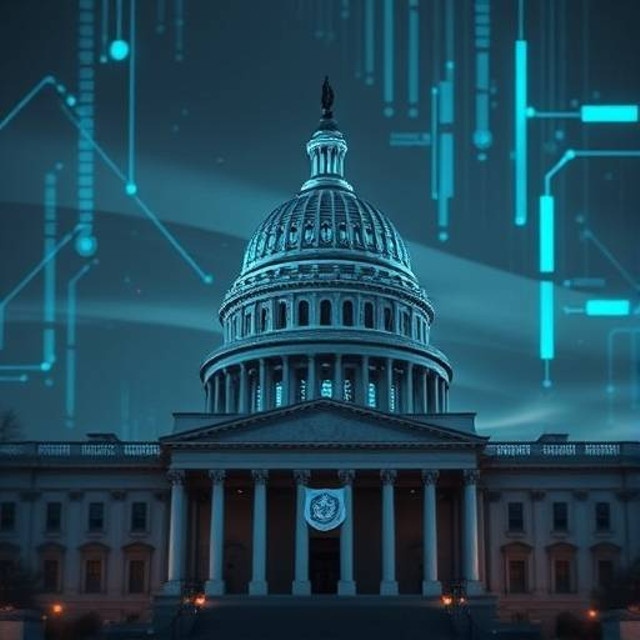Tentang KamiPedoman Media SiberKetentuan & Kebijakan PrivasiPanduan KomunitasPeringkat PenulisCara Menulis di kumparanInformasi Kerja SamaBantuanIklanKarir
2025 © PT Dynamo Media Network
Version 1.102.2
Konten dari Pengguna
The Role of Artificial Intelligence (AI) in Government Decision-Making
9 Desember 2024 11:07 WIB
·
waktu baca 7 menitTulisan dari HOWARD LING KUOK SIANG tidak mewakili pandangan dari redaksi kumparan

ADVERTISEMENT
Artificial Intelligence (AI) has quickly moved from being a futuristic concept to becoming a powerful force that is reshaping governance on a global scale. As the complexity of governance continues to increase, AI is presenting unprecedented opportunities for governments to streamline operations, improve decision-making processes, and deliver more efficient public services. In today’s data-driven world, governments are tasked with managing enormous amounts of information while simultaneously addressing complex societal challenges such as climate change, healthcare management, economic stability, and national security. The traditional decision-making processes, which often rely on human intuition and limited data analysis, are no longer sufficient to meet the demands of modern governance. AI is emerging as a solution to bridge this gap, offering governments the ability to manage data, allocate resources, and make decisions with improved accuracy and efficiency.
ADVERTISEMENT
One of the keyways AI is transforming governance is through its role in public policy development and decision-making. AI has the unique capability to analyze vast datasets quickly and efficiently, enabling governments to base their policies on data-driven insights rather than solely on human judgment. By leveraging AI, governments can predict future trends, identify emerging issues, and receive recommendations on how to respond to challenges effectively. For example, AI systems can analyze demographic data, economic indicators, and environmental conditions to help governments anticipate future developments such as population growth, healthcare demands, or the impacts of climate change (Berglind et al., 2022). With these predictive insights, governments can adopt more proactive policy responses, ensuring that they are prepared to meet these challenges head-on. In the healthcare sector, AI has proven especially valuable. During the COVID-19 pandemic, AI-driven tools were instrumental in tracking the virus’s spread, predicting healthcare needs, and guiding decisions on lockdown measures and vaccine distribution (Olawade et al., 2023). Governments can use similar AI tools to anticipate future public health crises, allocate resources more efficiently, and improve the overall healthcare system. Additionally, in environmental policy, AI models are being used to forecast climate change impacts, manage natural resources, and design sustainable urban planning initiatives (Al-Raeei, 2024). Through these applications, AI enables governments to create informed, sustainable policies that benefit society in the long term.
Resource allocation is another critical area where AI is making significant strides in governance. Governments often manage large budgets and must allocate resources in a way that meets the needs of their citizens effectively. However, this task can be complex and prone to inefficiencies. AI can optimize this process by analyzing historical spending data, predicting future needs, and recommending the most efficient distribution of funds and resources (Walser et al., 2023). For instance, in law enforcement, AI-driven predictive tools can identify areas where crime is most likely to occur, allowing law enforcement agencies to strategically deploy resources to the places where they are needed most. This not only improves public safety but also ensures that officers are in the right place at the right time. Similarly, in public services, AI is being used to automate routine tasks like processing applications, answering citizen inquiries, and managing paperwork (Pittman, 2024). By automating these administrative tasks, AI frees up government employees to focus on more complex issues, thereby improving the overall efficiency of public services. This optimization of resource allocation through AI ultimately leads to better outcomes for citizens and more effective use of public funds.
Another major advantage of AI in governance is its ability to process and analyze massive amounts of data with unmatched speed and accuracy. This capability enables governments to make more informed and precise decisions, especially in areas where timing is critical, and decisions need to be based on real-time information. For example, AI can monitor economic indicators in real-time to guide policy decisions on interest rates, inflation, and unemployment policies. By analyzing this data, governments can make more accurate decisions that are tailored to current economic conditions, ensuring that their policies are both effective and responsive to the needs of the moment. AI’s role in improving decision accuracy is also evident in public infrastructure management. In smart cities, AI is used to optimize traffic flow, manage public transportation, and monitor air quality. By enabling real-time adjustments to urban services, AI helps reduce congestion, lower emissions, and improve residents’ quality of life. This data-driven approach to decision-making allows governments to address issues more accurately and efficiently than ever before.
ADVERTISEMENT
AI’s predictive capabilities are also proving invaluable in the realm of disaster management and emergency response. By analyzing weather patterns, geological data, and historical disaster records, AI models can predict natural disasters such as earthquakes, floods, and hurricanes (Joshua J. Rosales, 2024). These predictions give governments the crucial lead time needed to prepare for disasters more effectively, allocate resources in advance, and respond quickly when disasters strike. A prime example of AI’s impact in this area is the Stanford Earthquake Detecting System (STEDS), an AI model developed by Stanford researchers. STEDS is designed to detect small tremors that are often overlooked by traditional methods, providing valuable insights into a region’s seismic activity and helping to predict larger, more destructive earthquakes. The success of STEDS highlights the potential for AI to improve disaster forecasting and its broader application in predicting other natural disasters (Neil Sahota, 2023). In addition to prediction, AI systems can manage large-scale data analysis during emergencies to coordinate rescue and relief efforts. For example, AI tools can track the movement of displaced populations, assess damage from satellite images, and prioritize areas for aid delivery. This enables governments to respond to disasters with greater speed and precision, minimizing the loss of life and property.
ADVERTISEMENT
Artificial Intelligence is rapidly transforming the landscape of governance, offering governments new tools to enhance decision-making, optimize resource allocation, and improve public services. From predicting future societal challenges to responding more effectively to emergencies, AI is enabling governments to make better-informed, data-driven decisions that lead to more efficient governance and better outcomes for citizens. The role of AI in areas such as public safety, disaster management, and economic decision-making demonstrates its versatility and potential to revolutionize every aspect of governance. As AI technology continues to evolve, its integration into government processes will only deepen, offering even greater possibilities for innovation and progress. By embracing AI, governments can deliver smarter, faster, and more efficient services, ultimately improving the quality of life for their citizens and meeting the challenges of the future head-on.
ADVERTISEMENT
References
Al‐Raeei, M. (2024). The Smart Future for Sustainable Development: Artificial Intelligence
Solutions for sustainable urbanization. Sustainable Development. https://doi.org/10.1002/sd.3131
Artificial intelligence (AI) in government can accelerate data analysis, boost efficiency.
(n.d.). Artificial Intelligence (AI) in Government. Intel. https://www.intel.com/content/www/us/en/learn/ai-in-government.html
Artificial Intelligence in predictive policing issue brief. NAACP. (2024, February 15).
https://naacp.org/resources/artificial-intelligence-predictive-policing-issue-brief
Berglind, N., Fadia, A., & Isherwood, T. (2022, July 25). The potential value of AI-and how
governments could look to capture it. McKinsey & Company. https://www.mckinsey.com/industries/public-sector/our-insights/the-potential-value-of-ai-and-how-governments-could-look-to-capture-it
Caiza, G., Sanguña, V., Tusa, N., Masaquiza, V., Ortiz, A., & Garcia, M. V. (2024). Navigating
governmental choices: A comprehensive review of artificial intelligence’s impact on decision-making. Informatics, 11(3), 64. https://doi.org/10.3390/informatics11030064
Chiancone, C. (2023, October 5). Understanding the role of AI in Government Decision
ADVERTISEMENT
making. LinkedIn. https://www.linkedin.com/pulse/understanding-role-ai-government-decision-making-chris-chiancone
FXMedia Team. (2024, August 7). AI in government: Enhancing public services and
transparency. FXMedia: Solutions for Metaverse. https://www.fxmweb.com/insights/ai-in-government-enhancing-public-services-and-transparency.html
Joshua.j.rosales. (2024, June 12). How ai in disaster management is revolutionizing the
game. Enigma Advisory. https://enigma-advisory.com/the-role-of-ai-in-disaster-management/
Neil Sahota. (2023, July 24). Ai in disaster management: Ai’s role in disaster risk reduction.
https://www.neilsahota.com/ai-in-disaster-management-ais-role-in-disaster-risk-reduction/
Olawade, D. B., Wada, O. J., David-Olawade, A. C., Kunonga, E., Abaire, O., & Ling, J. (2023).
Using artificial intelligence to Improve Public Health: A Narrative Review. Frontiers in Public Health, 11. https://doi.org/10.3389/fpubh.2023.1196397
Pittman, C. (2024, May 20). The role of AI in administrative work. LinkedIn.
https://www.linkedin.com/pulse/role-ai-administrative-work-cocoa-pittman-dpree
Samana, S. (2024, September 5). Machine Learning for Resource Allocation and maximum
ADVERTISEMENT
efficiency. Pecan AI. https://www.pecan.ai/blog/machine-learning-for-resource-allocation/
Walser, S., Elliott, C., & Baker, M. (2023, May). How machine learning can improve budget
forecasting for ... https://www2.deloitte.com/content/dam/Deloitte/us/Documents/public-sector/ml-budget.pdf
Yar, M. A., Hamdan, M., Anshari, M., Fitriyani, N. L., & Syafrudin, M. (2024). Governing with
intelligence: The impact of artificial intelligence on policy development. Information, 15(9), 556. https://doi.org/10.3390/info15090556

